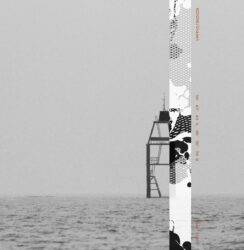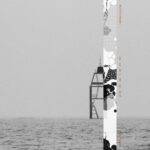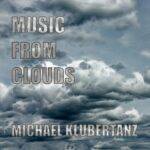MINING – CHIMET
There are many ways to compose music – and in recent years, we’ve been seeing compositions more and more frequently that are based on external streams of data. That’s not as straightforward as it sounds: it takes a lot of extra work to transform a data stream into an interesting soundscape.
Mining – named after a weather station a mile off the coast of Hayling Bay, West Sussex – is the auditory reflection of the storms Ophelia and Brian that battered the coast of England in October 2017.
“The music on Chimet charts the progress of the two storms over the course of a week. It was created using 2,016 sampled data streams, collected every five minutes between 0030 on October 16th, 2017 and 0025 on the 23rd, translating seven days of information into 67 minutes and 12 seconds of detailed and evolving music.”
Craig Kirkpatrick-Whitby is the data scientist, inventor, and sailor behind this project. He assembled a team of programmers, musicians, and designers for this project. Sound designer PJ Davy developed the soundscapes based on the data, and then Matthew Bourne improvised the piano parts in response to those soundscapes and then added cello and Memorymoog parts.
Without detailed explanation, it’s not entirely clear how the data were precisely used, but nonetheless, the final result is more ‘musical’ than one would expect from such a statistical background.
It’s a dynamic listening experience that ‘seems to change depending on your state of mind, and resonates on a primal level which belies its data-led compositional approach. While the origins of Chimet lie in the numbers, the resultant record sits proudly in that artistic tradition’.
The same data were also used for the visual aspect: graphic designer Oli Bentley and generative artist Sock Baeus Redding utilized them to create the artwork for the 2LP and CD editions (physical stock runs out fast, by the way), as well as for the videos included.
MICHAEL KLUBERTANZ – MUSIC FROM CLOUDS
On his debut album Music From Clouds, German composer Michael Klubertanz also transforms a natural phenomenon into music, but he uses a completely different process: optical synthesis. This means the sounds on this album are derived exclusively from photographs of clouds. ‘No synths, no presets, handcrafted sound!’
I definitely would have wanted to know more about this process: how is the image on the photo transformed to sound? But unfortunately, we have to guess and leave that to our imagination because there are no further details given on that process. (*)
This may be Michael Klubertanz’s debut album, but that does not mean he has just started making music. As a composer he has created 60+ scores for film and TV, some of them award-winning. There were some soundtrack albums released previously, but this is his first ‘solo’ album (unrelated to a soundtrack), focusing on ‘more abstract ways of expressing himself’.
The music is available on streaming platforms only (Spotify, Apple Music, Tidal, Deezer, Soundcloud, Amazon etc) and cannot be obtained in the traditional sense. Simply check the links in the title to listen to this album.
MICHAEL KLUBERTANZ – CLOUDS 4 Vapors
(*) edit:
Klubertanz added further details about Optical Synthesis:
“The technique is not new at all. The internet is full of videos where people synthesize their photographs with software like Photosounder. I was always intrigued by the idea and very much underwhelmed by the results. The programs I finally found most versatile in sound were SonicPhoto and SoundArt.
Once I had my ten different cloud sounds I started to process them further. In their original state (which you still can hear at times in the album) they were atmospheric (no pun intended) and of a very noisy yet semitonal quality. Lengths ranged from eighteen seconds up to almost three minutes. These were all nice but unfit for music. I needed shorter segments and more tonal precision. So the basic sounds were further elaborated on, filtered, cut up, shortened, stretched and cleaned up.
The resulting sounds were subsequently fed into audio and sampler tracks in Cubase, imported into instruments like Kontakt and Portatron and treated with (mostly onboard) effects.”




